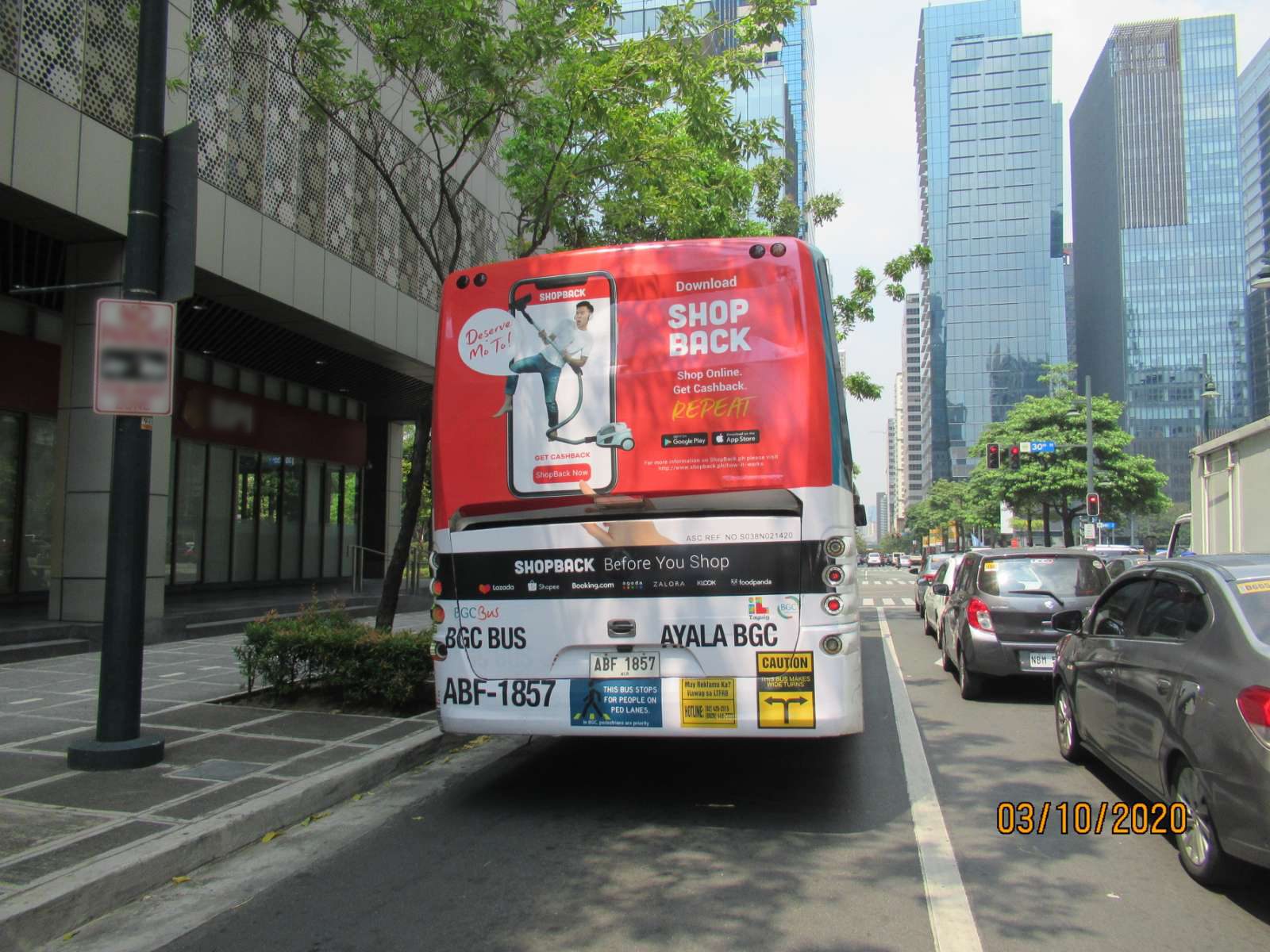Transit Advertising Philippines: An Innovative Way to Promote
Transit Advertising Philippines: An Innovative Way to Promote
Blog Article
Understanding the Duty of Transit Advertising And Marketing in Enhancing Brand Presence and Customer Engagement
Transportation advertising has emerged as a critical element in the marketing landscape, providing unique chances for brand names to elevate their presence and engage customers properly. With the capability to get to a restricted and diverse target market throughout their daily commutes, these marketing approaches are not just regarding visibility; they are about developing significant connections with potential clients. As we discover the diverse advantages and innovative techniques within transit marketing, it comes to be important to take into consideration how these components jointly affect customer understanding and behavior, increasing inquiries about their lasting influence on brand commitment.
Interpretation of Transportation Advertising And Marketing
Transit advertising describes the method of advertising items, services, or brand names with advertisements put in and around mass transit systems. This form of marketing encompasses a selection of placements, consisting of posters on trains and buses, digital displays at transit stations, and wraps on the outside of automobiles. It aims to reach a varied target market, maximizing the high foot traffic related to public transit.
Transit advertising is purposefully placed to catch the interest of commuters, that often invest considerable time taking a trip or waiting. By integrating promotions into the everyday routines of individuals, brands can produce an enduring perception and foster brand acknowledgment. The medium is especially efficient in urban atmospheres, where mass transit is a primary mode of travel.
Furthermore, transit marketing can help with local targeting, allowing businesses to reach details demographics based upon transit routes and station places. As urban populations expand and the use of public transportation rises, this advertising approach has gained prestige as a crucial part of incorporated marketing methods. The vibrant nature of transit advertising and marketing, integrated with its capacity to involve consumers in a captive environment, underscores its importance in modern marketing practices.
Advantages of Transportation Advertising
The performance of transit advertising and marketing depends on its ability to supply a multitude of benefits to brands looking for to boost exposure and involvement. One of the main advantages is the extensive reach it uses; transportation advertisements can effectively target varied demographics across city areas, reaching both pedestrians and commuters alike. This wide exposure dramatically increases brand recognition.
Another advantage is the high frequency of perceptions. As transit vehicles take a trip along recognized routes and quit at multiple places, they develop repetitive direct exposure that enhances brand name messages. This regularity cultivates knowledge, which is essential in customer decision-making.
Transit advertising and marketing is additionally cost-effective contrasted to various other media platforms. Offered its extensive reach and possibility for high impressions, brands usually experience a reduced expense per thousand perceptions (CPM), optimizing their advertising and marketing budget.
Additionally, transit advertisements can produce a feeling of area connection. By aligning with neighborhood transit systems, brand names can reverberate with local audiences and promote a feeling of local pride. This local approach enhances brand loyalty and involvement, making transportation marketing an engaging choice for organizations aiming to strengthen their presence on the market.

Effective Approaches for Transportation Campaigns
To take full advantage of the impact of transportation campaigns, brand names need to take advantage of strategic preparation and execution tailored to their target audience. First, determining the demographic features of the target market utilizing public transportation is essential. This enables brand names to develop individualized messaging that reverberates with prospective clients.
Next, picking the this post ideal transit tools is necessary. Whether using bus covers, metro posters, or digital displays, each tool has special benefits that can improve exposure. For circumstances, dynamic visuals on bus wraps can draw in interest, while digital ads can be updated regularly to show timely promos.
In addition, incorporating a natural branding technique across transit platforms makes sure consistency and strengthens the brand's identity. Making use her latest blog of distinctive designs and unforgettable taglines will certainly strengthen brand recall among travelers.
Lastly, timing is a crucial consider carrying out successful transportation projects. Launching campaigns throughout peak travel hours or neighborhood occasions can significantly enhance visibility and involvement. By using these strategies, brands can efficiently harness the potential of transit advertising and marketing, cultivating better recognition and connection with their target market. Eventually, a well-executed transportation campaign can drive considerable development in brand name exposure and consumer engagement.

Gauging Impact and Engagement
In assessing the efficiency of transit ad campaign, precise measurement of effect and engagement is necessary for brands looking for to optimize their marketing techniques. Metrics such as reach, frequency, and impacts give fundamental data to assess presence. Examining these variables aids identify the amount of prospective consumers are revealed to the advertisements throughout their day-to-day commutes.
Involvement can be additional evaluated through consumer communications, such as website web traffic, social networks states, and straight feedbacks to calls-to-action featured in the advertisements. Utilizing devices like QR codes or special URLs can help with tracking of consumer actions directly linked to transit campaigns. Studies and feedback systems additionally function as useful techniques to collect qualitative information on consumer perceptions and recall of the advertisement.
Moreover, progressed analytics and attribution models can correlate transit direct exposure with succeeding buying behavior, offering insights right into the roi. By utilizing a thorough strategy that integrates qualitative and quantitative measures, brands can develop a nuanced understanding of their transit advertising and marketing impact. Ultimately, this data-driven method enables brand names to refine their campaigns, ensuring they reverberate efficiently with target market and improve total brand presence.
Study of Successful Campaigns
Successful transit marketing projects serve as engaging instances of how effective methods can boost brand exposure and interaction. Transit Advertising Philippines. One notable instance is the "I Love New York" campaign, which changed the city's photo and drew in countless visitors. By making use of subway ads, billboards, and bus wraps, the campaign created a strong, natural brand name identity, leading to a significant uptick in tourism and regional business patronage
Another excellent campaign is Coca-Cola's "Share a Coke" initiative, which leveraged transportation advertising to personalize the brand experience. By featuring popular names on Find Out More promotional materials across numerous transit platforms, Coca-Cola fostered a deeper psychological link with consumers, encouraging them to share their experiences on social networks.
Additionally, the "Got Milk?" campaign successfully utilized mass transit ads to get to a broad target market, strengthening the message of the importance of milk in a balanced diet. The campaign saw a quantifiable rise in milk usage in target demographics.
These study highlight that when performed thoughtfully, transportation advertising can significantly boost brand name visibility, foster consumer interaction, and drive measurable outcomes, showing its crucial function in modern-day advertising and marketing techniques. - Transit Advertising Philippines
Conclusion
In final thought, transportation advertising works as a vital tool for boosting brand presence and promoting consumer involvement. By utilizing strategically positioned advertisements within mass transit systems, brand names can successfully strengthen and get to varied audiences recognition via regular exposure. The implementation of targeted messaging and cutting-edge techniques even more enhances the effect of transportation projects. Ultimately, the capacity to determine involvement and examine effective situation studies underscores the effectiveness of transportation marketing in driving brand commitment and consumer interactions.
Transit advertising and marketing has arised as an essential element in the marketing landscape, supplying special opportunities for brand names to elevate their visibility and engage consumers efficiently.Additionally, transit marketing can help with local targeting, allowing businesses to reach certain demographics based on transportation paths and terminal places.In examining the performance of transit advertising projects, precise dimension of influence and involvement is vital for brands looking for to optimize their advertising and marketing strategies.Effective transportation marketing projects offer as engaging instances of how reliable strategies can elevate brand name exposure and involvement.In verdict, transit advertising and marketing serves as an essential tool for improving brand name visibility and cultivating customer involvement.
Report this page